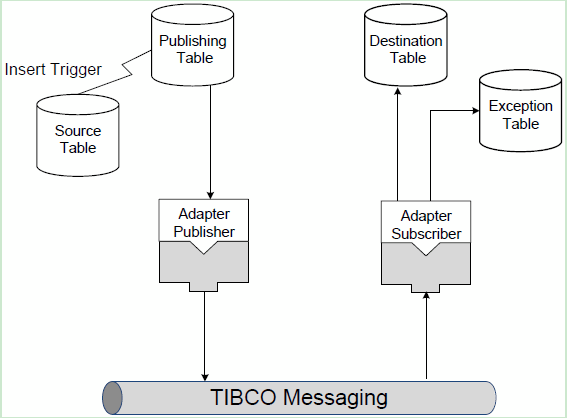Tables and Data Flow
In this tutorial, you can use the source table, publishing table, destination table, and exceptions table to exchange data.
For details about the descriptions of these tables, see Table Reference.
When you insert, update, delete, or upsert data in the source table, the following actions occur:
- If you set Publish by Value as the storage mode, the insert, update, delete, or upsert operation fires a trigger and the publisher adapter copies all the changed rows to the publishing table. If you set Publish by Reference as the storage mode, the publisher adapter copies only the rows changed in the primary key column and the user-defined key column to the publishing table.
- The publisher adapter polls the publishing table to check if any new row was inserted. If any, the publisher adapter fetches the newly inserted rows by using JDBC, packages them into a message, and then publishes the message.
- The subscriber adapter listens for a message. Upon receipt of the message, the subscriber adapter inserts or deletes a row in the destination table by using JDBC.
The following figure illustrates the data flow:
Copyright © Cloud Software Group, Inc. All rights reserved.

